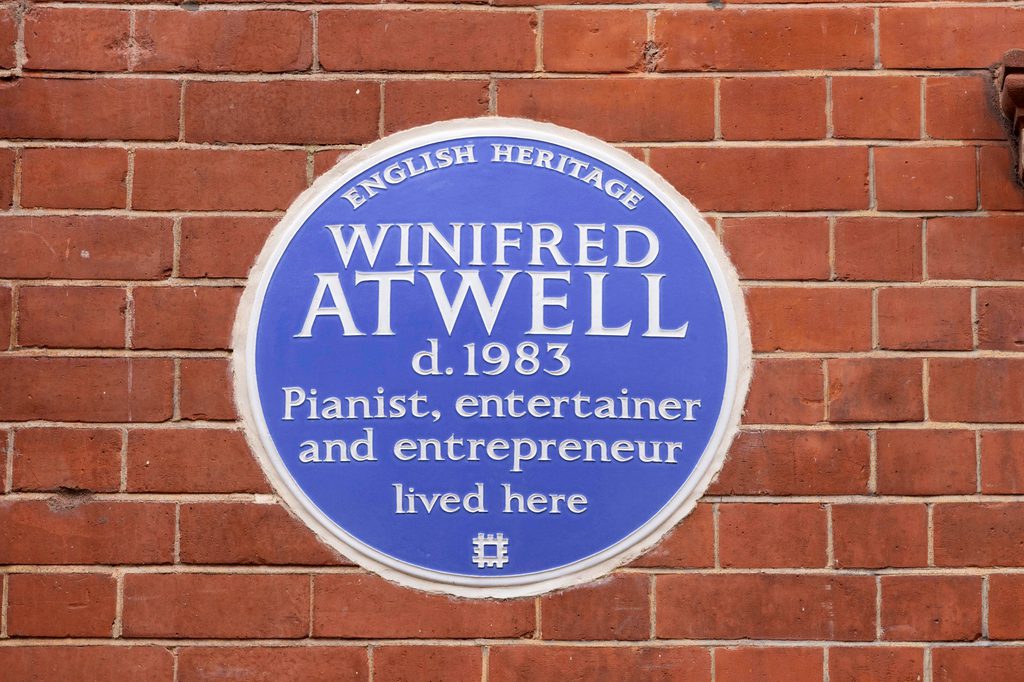
The plaque marks 18 Bourdon Street, Mayfair, where she lived in the 1950s and 60s with her husband and manager, Lew Levisohn. It was here she kept her two most famous instruments: her Steinway concert grand and her beloved ‘other piano’ – a deliberately out-of-tune upright that became her signature in countless honky-tonk performances.
One of the most successful musicians in post-war Britain, Winifred was the first Black artist to achieve a UK number one single, with the medley ‘Let’s Have Another Party’, in 1954. Her honky-tonk style–ragtime and boogie were her staples, paired with classical virtuosity and undeniable stage presence, which made her a household name. Between 1952 and 1960, she spent 117 weeks in the British pop charts, appeared on over 100 BBC radio programmes, and fronted her own shows on ITV and BBC television. Her characteristically energetic rendition of the ‘Black and White Rag’ was later used as the theme tune of the BBC snooker programme Pot Black.

The plaque was unveiled by Jools Holland who said: 'Winifred Atwell is very important in British cultural and musical life. She is one of the first women, and certainly one of the first women of Afro Caribbean heritage to become a mainstream figure in 1950s British entertainment. She was also a piano inspiration to both Sir Elton John, myself, and many others. It is therefore a tremendous personal honour for me to help celebrate her legacy with a blue plaque.'
Winifred Atwell’s life and music continue to resonate through a lasting legacy of artistry, entrepreneurship and cultural impact that helped reshape the sound and face of post-war Britain.
Image 1: Portrait of Winifred Atwell with Johnnie Ray from the Academy's Collections.
Image 2: Jools Holland unveils the plaque (c) English Heritage
